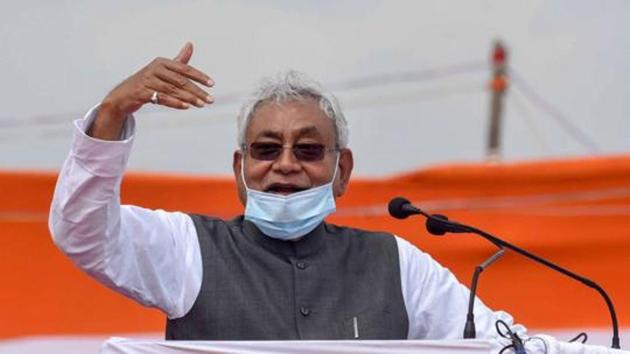For his vision and actions, Bihar trusts Nitish Kumar | Opinion
He has transformed Bihar’s development map for the better, empowered people, revived the image of the state
If the Election Commission (EC) decides to conduct the 2020 Bihar assembly elections in the midst of the Covid-19 pandemic, the exercise will be a watershed event for several reasons.

The first critical change will be the showcasing of the power, versatility and the near-universal application of the digital and virtual media as the primary medium of campaigning, voter connect, and possibly also the casting of votes.
The second, and most vital, aspect of this election will be a paradigm shift in the electoral plank. The clichéd bijli, sadak, paani (power, roads, water) trope will no longer hold. I feel that the main determinant to shaping voter perception in this election will be centred on delivery — assured delivery to be precise. And this is where the incumbent chief minister (CM), Nitish Kumar, has no competition.
Nitish is not just a visionary, but an energetic doer. A product of socialist and youth movements, his politics and policies are guided by principles of equality, justice, social welfare and progress. He stands out among the select group of politicians who have been in public life for over four decades.
As Union minister, and then as CM of Bihar, he has gone through all the rough and tumble of politics. He has never strayed from his principles in his stewardship of the state.
He has used his successive stints as CM to deliver on basic amenities such as electricity, water, social security, road connectivity and, most important, law and order. So, it is little wonder that bijli, sadak, paani are issues of the past.
The Bihar of today is a far cry from the one that we inherited in 2005. We have round-the-year connectivity to the farthest corners of the state, thanks to the 27,000 kilometres of state highways and district roads and 96,417km of rural roads completed over the last 15 years. We have moved to being a power-surplus state with all of Bihar’s villages on the electricity grid. Today, even far-flung rural areas get 20 hours or more of electricity.
The state’s piped water supply scheme — Har Ghar Nal ka Jal — which is close to connecting every household with piped potable water, on the lines of a similar central government scheme, was conceived by Nitish in the early days of his current term. It has been executed on schedule.
This August 15, the CM promised that, if re-elected, he would ensure water for every plot in Bihar. This will give agriculture in the state a critical push and help farmers harvest three-to-four crops annually. And the CM’s record shows that he delivers on his promises.
Nitish’s name has come to be associated, even in the remotest parts of the state, with roads, electricity, drinking water, the girl child’s education, women’s empowerment and access to public services. This means that the expectations from him are enormous.
With such expectations, there will be some dissatisfaction which will also be expressed. But this is because he has set the benchmark very high and people feel confident in expressing their satisfaction and grievances. This is a sign of the trust that people repose in him.
His opponents may feel that anti-incumbency will work against him, but there is little evidence on the ground to support this. No other public figure or political opponent comes even remotely close to generating the public confidence Nitish does.
At the more subliminal level though, his appeal is also based on his having revived the image of Bihar, and all things Bihari, cutting across all castes and creeds.
While Biharis were once thought of as rustic and laggardly, today they are considered hardworking and persevering, thanks to the model of development pursued by the CM namely nyay ke saath vikas (justice and development).
One must remember that Bihar was in a dismal state when Nitish took charge in 2005. It soon moved to a double-digit growth rate through an entire decade. Successive governments led by Nitish had to work on many fronts — systemic reforms, robust governance and social mobilisation.
It was the first state to implement 50% reservation for women in panchayats. Bihar’s espousal of many social engineering initiatives aimed primarily at empowerment, among them the girl child’s education, prohibition, curbing child labour, and the Jal Jeevan Hariyali Abhiyan targeted at addressing the climate crisis, have all been important cogs in the wheel of Bihar’s makeover that Nitish has diligently crafted over 15 years.
Not surprisingly, this makeover is integral to the consciousness of every individual. It can be seen in the way they conduct themselves in their daily lives, in the confidence with which many women transact business across the million-strong self-help groups of Jeevika, in the images of young girls cycling through Bihar’s village roads to schools and, indeed, in the ease with which trade and commerce are carried out daily.
For several generations of voters, this revitalisation of their collective persona is too precious to compromise with. The modern voter is discerning enough to tell the difference between propaganda and real promises.
They will be selective about who they will vote for in the elections. They will want continuity and development, they will not give up on the gains they have made during the last 15 years.
They will vote for a new, resurgent Bihar.
Sanjay Kumar Jha is national general secretary, JD(U) and minister, water resources, Government of Bihar
The views expressed are personal






